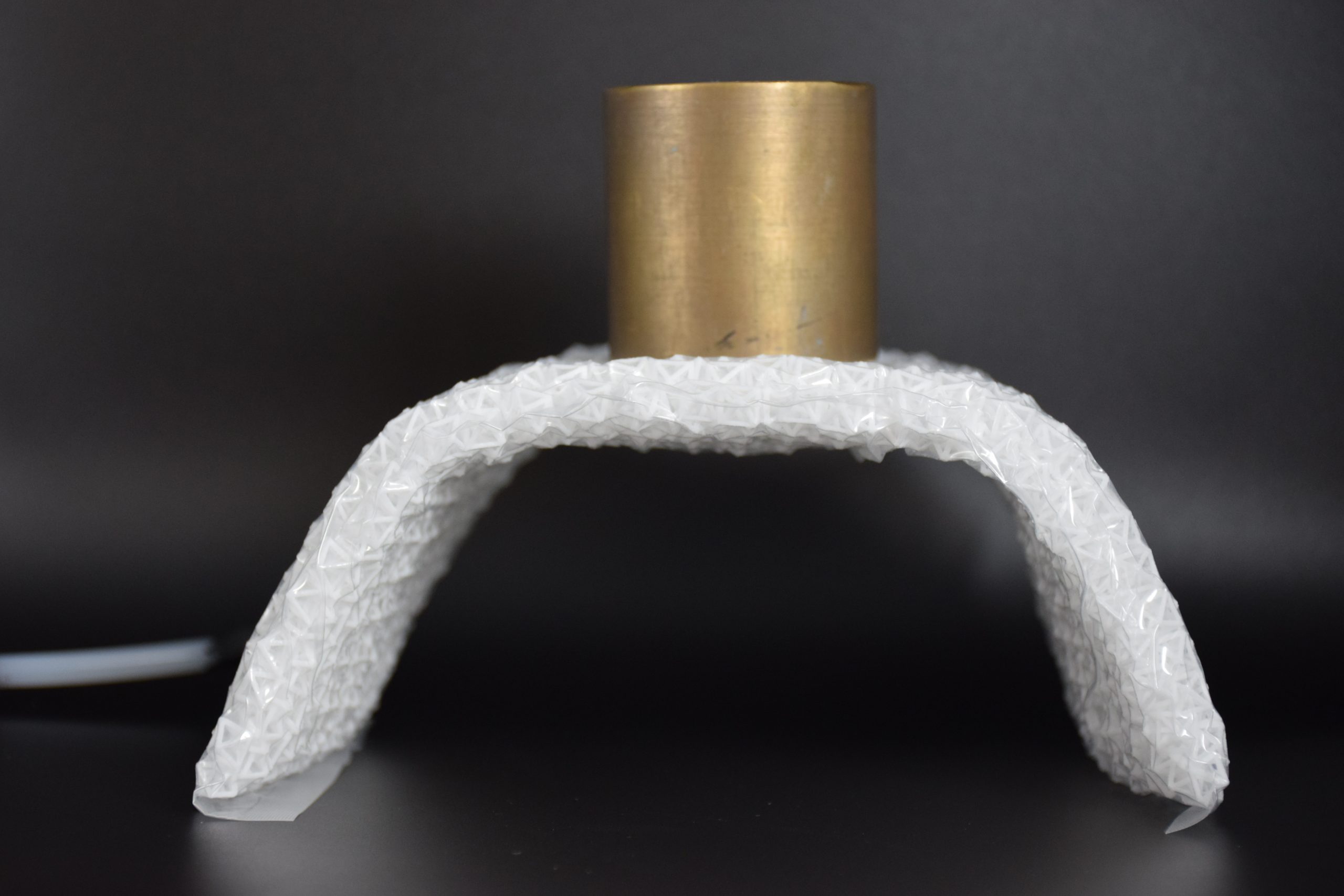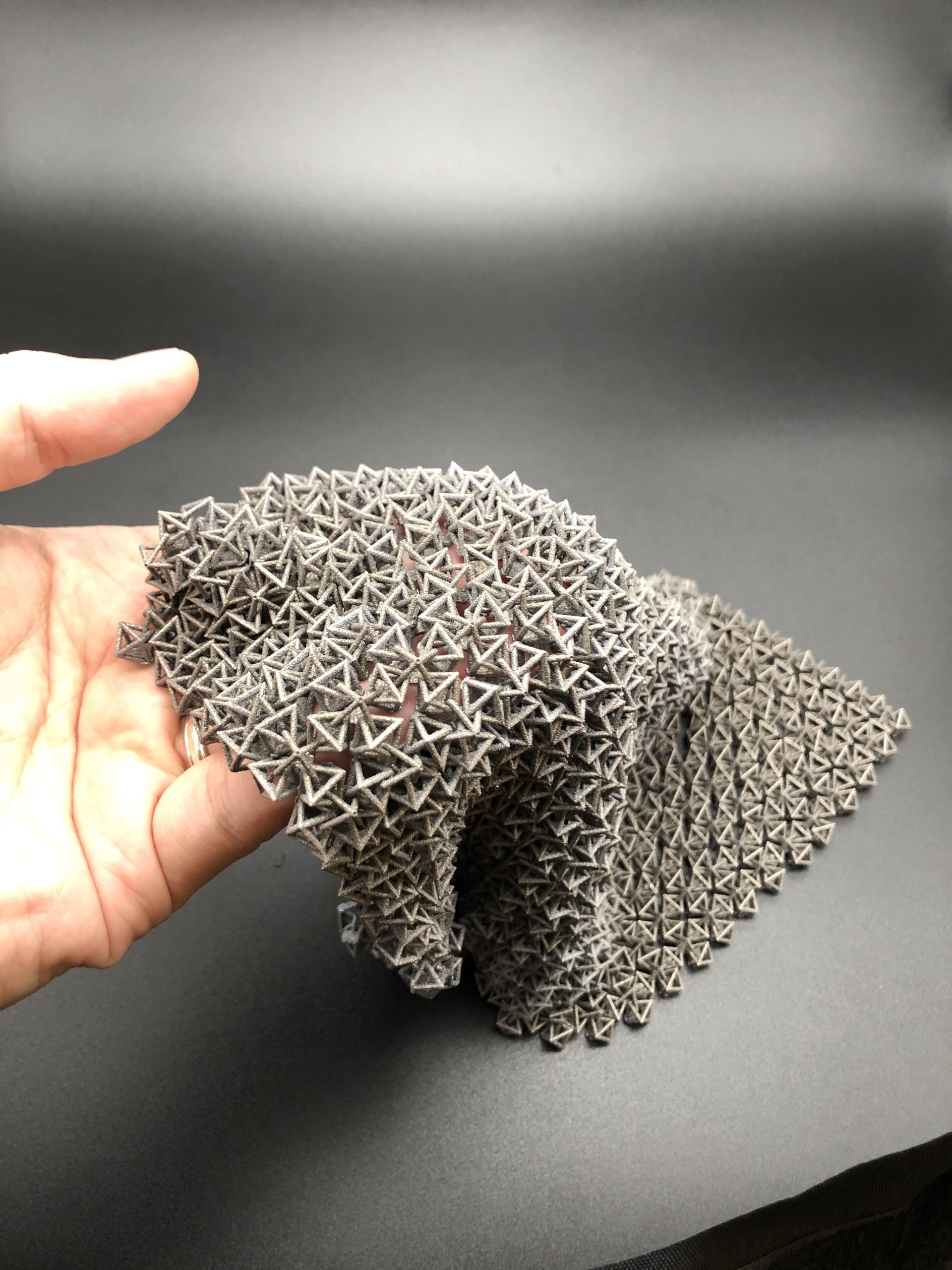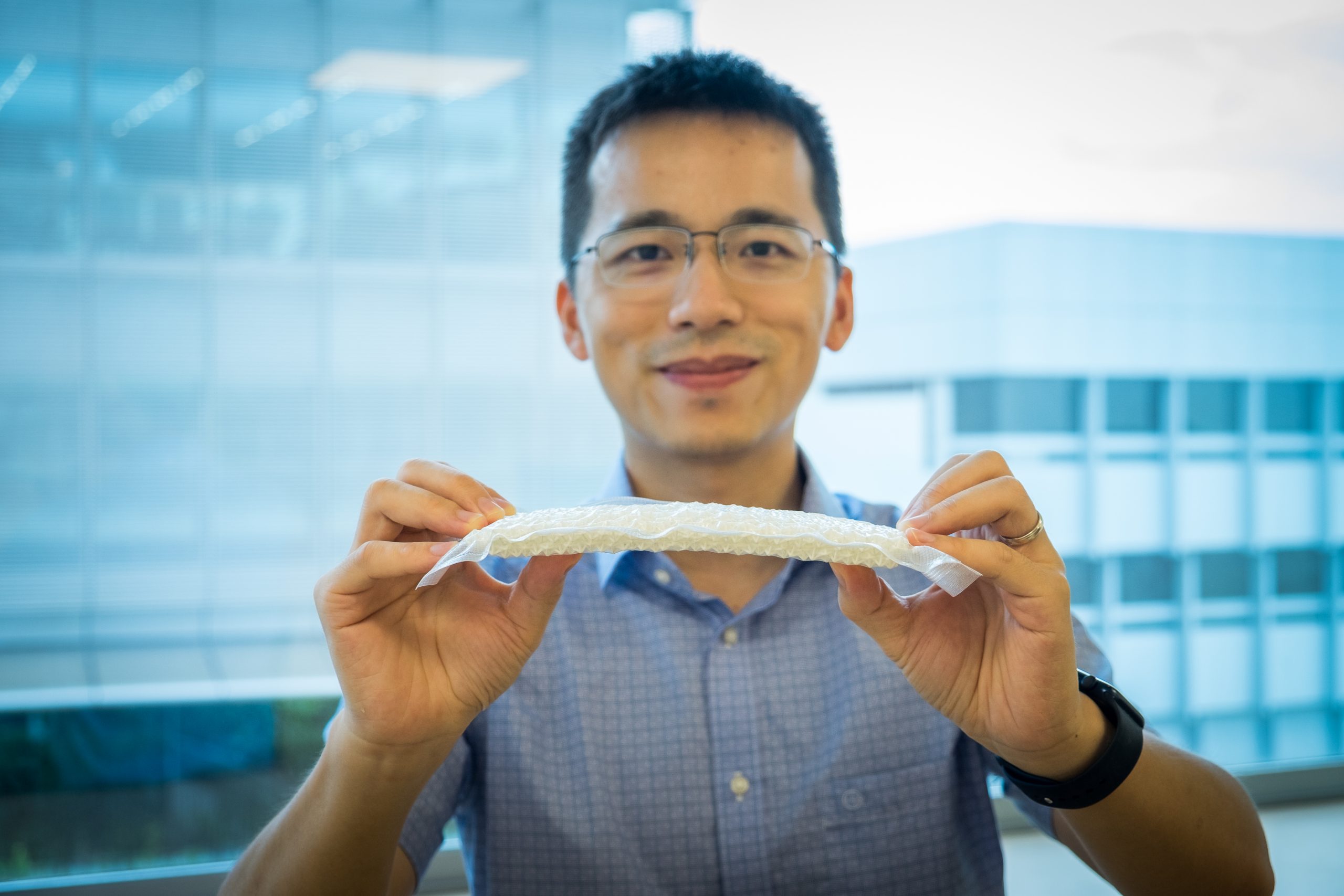Nominations for the 2021 3D Printing Industry Awards are now open, have your say who is leading the industry now.
Scientists from Nanyang Technological University (NTU) Singapore and the California Institute of Technology (Caltech) have 3D printed a flexible chain mail-inspired fabric that can stiffen on demand.
3D printed from nylon plastic polymer octahedrons that interlock with each other, the fabric can turn into a rigid structure that is 25 times stiffer than its relaxed form. Classed as a wearable structural fabric, the development could pave the way for next-generation fabrics that are capable of hardening to protect a wearer against impacts or for additional load bearing requirements.
The fabric could potentially be used for bullet-proof or stab-proof vests, medical support, and protective exoskeletons for high-impact sports or workplaces, like construction sites.
“With an engineered fabric that is lightweight and tuneable – easily changeable from soft to rigid – we can use it to address the needs of patients and the aging population, for instance, to create exoskeletons that can help them stand, carry loads and assist them with their daily tasks,” said Wang Yifan, Assistant Professor at NTU’s School of Mechanical and Aerospace Engineering and Lead Author of the paper.
Hardening fabric via jamming transition
The scientists’ hardening fabric is inspired by ancient chain mail armor, and consists of 3D printed hollow nylon plastic polymer octahedrons – a shape with eight equal triangular faces – that interlock with each other. Based on the scientific concept of ‘jamming transition’, the soft fabric turns into a hard, rigid structure when wrapped within a flexible plastic envelope and vacuum packed.
During this transition, particles switch from a fluid-like soft state to a solid-like rigid state with increased packing density, however typically solid particles are too heavy for wearable applications.
To address this issue, the researchers designed structured nylon polymer particles, each made of hollow frames, in the shape of rings, ovals, squares, cubes, pyramids, and other shapes made up of octahedrons, that could be interlocked. These structures were then 3D printed as a single piece to form a low density chain mail-style fabric with a high tensile stiffness.
To strike the ideal balance between the fabric’s weight and flexibility, the scientists modelled the number of average contact points per particle and investigated how much each structure bent in response to applied stress. To control the stiffness of the fabric, they then encapsulated it within a flexible plastic envelope and compacted it using a vacuum. This pressure increased the packing density of the fabric, causing each particle to have more contact with its neighbor and resulting in a structure that is 25 times more rigid than its ‘soft’ form.
“We wanted to make materials that can change stiffness on command,” said Chiara Daraio, Caltech’s G. Bradford Jones Professor of Mechanical Engineering and Applied Physics. “We’d like to create a fabric that goes from soft and foldable to rigid and load-bearing in a controllable way.”
The 3D printed fabric is able to hold a load of 1.5kg, more than fifty times its own weight. To test the material’s stiffness and strength, the scientists dropped a steel ball weighing 30g onto the chain mail at a speed of three meters per second. When rigid, the impact deformed the fabric by just 3mm, reducing penetration depth by six times in comparison to the 26mm of deformation observed when the fabric was relaxed.

Further development with metals
Having demonstrated their concept with plastic polymer octahedrons, the scientists are also looking to replicate the wearable structured fabric using various metals.
“Inspired by ancient chain mail armor, we used plastic hollow particles that are interlocked to enhance our tuneable fabric’s stiffness,” said Wang. “To further increase the material’s stiffness and strength, we are now working on fabrics made from various metals including aluminum, which could be used for larger-scale industrial applications requiring higher load capacity, such as bridges or buildings.”
To achieve this, the team has already 3D printed the chain mail using aluminum, and has successfully demonstrated that, while maintaining the same flexibility and soft performance of nylon, it can be jammed into structures that are much stiffer.
Such 3D printed metallic chain mails could potentially be used in applications such as body armor to protect against hard and high-speed impacts from sharp objects. For these scenarios, the envelope material could be made from aramid fibers, also known as Kevlar, which is commonly used in bulletproof vests.
Going forward, the scientists will seek to improve the performance of their chain mail fabric and explore further ways of stiffening it, such as through magnetism, electricity, or temperature.
Further information can be found in the study titled: “Structured fabrics with tunable mechanical properties”, published in the Nature journal. The study was co-authored by Y. Wang, L. Li, D. Hofmann, J. Andrade, and C. Daraio.

3D printing wearable fabrics
3D printing has been deployed for the creation of fabrics for a variety of different purposes. For instance, researchers from MIT have previously developed a flexible, 3D printable mesh fabric claimed to be “as soft as skin”, which could potentially be used to create medical devices, wearable supports and implantable devices.
Meanwhile, polymer specialists Polymaker and Covestro have jointly developed 3D printable fabrics from a TPU-based polymer as a more environmentally-friendly alternative to traditional weaving techniques. The 3D printed fabrics are designed for use in conventional production lines and can be attached to other articles of clothing such as shoes, bags, and hats.
3D printing has also been utilized elsewhere in the fashion industry thanks to the creative freedom it offers, and has even made catwalk appearances at global events such as New York City’s Met Gala and Paris Fashion Week. Esteemed fashion designers Ganit Goldstein and Julia Koerner have recently leveraged Stratasys’ PolyJet technology to directly 3D print designs onto their garments, while Chiara Giusti has partnered with Superforma Fablab to create a 3D printed clothing line called TECHNĒ.
The use of 3D printing in fashion and textile design has also been explored for some time by fashion designer and researcher Mingjing Lin, whose thesis investigated the relationship between 3D printed design and the human body, and how fluidity within 3D printed textiles can be accomplished.

Nominations for the 2021 3D Printing Industry Awards are now open, have your say who is leading the industry now.
Subscribe to the 3D Printing Industry newsletter for the latest news in additive manufacturing. You can also stay connected by following us on Twitter and liking us on Facebook.
Looking for a career in additive manufacturing? Visit 3D Printing Jobs for a selection of roles in the industry.
Subscribe to our YouTube channel for the latest 3D printing video shorts, reviews and webinar replays.
Featured image shows when stiffened, the chain mail fabric can withstand up to 50 times its own weight. Photo via NTU Singapore.



